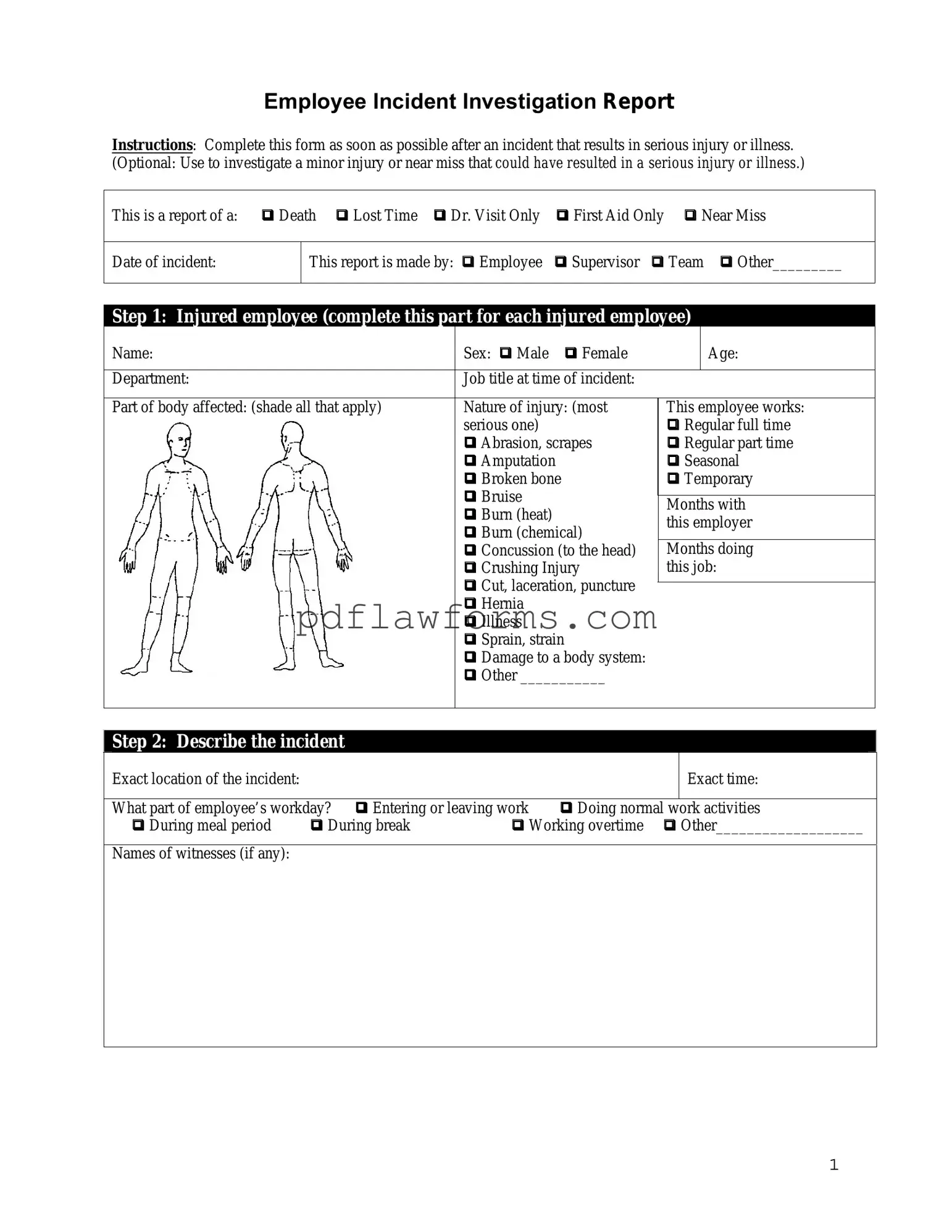Filling out an Employee Accident Report form accurately is crucial for both the employee and the employer. However, many individuals make common mistakes that can lead to complications down the line. Understanding these pitfalls can help ensure that the report serves its intended purpose effectively.
One frequent mistake is failing to provide complete information. Employees often skip sections or leave out important details about the accident. Every piece of information matters, from the date and time of the incident to the specific location. Omitting details can create confusion and hinder the investigation process.
Another common error is not being specific about the nature of the injury. Instead of describing the injury clearly, some people use vague terms. For instance, saying "hurt my leg" doesn’t convey the severity or type of injury. Clear descriptions help medical professionals assess the situation accurately and provide appropriate treatment.
Many individuals also forget to document witnesses. If others were present during the accident, their accounts can be invaluable. Failing to include witness names and contact information can limit the investigation’s effectiveness and leave out critical perspectives on what occurred.
Additionally, some employees neglect to report the accident promptly. Delaying the submission of the report can lead to complications, especially if injuries worsen or if evidence is lost over time. Timeliness is key in capturing accurate details and ensuring proper follow-up.
Another mistake involves not following company protocols. Each organization may have specific guidelines for reporting accidents. Ignoring these procedures can lead to misunderstandings and might even result in disciplinary actions. Familiarizing oneself with company policies is essential.
Inaccurate or incomplete descriptions of the accident itself is also a common error. Employees might fail to explain how the accident happened, which can lead to misinterpretations. A clear narrative helps in understanding the circumstances surrounding the incident and can prevent future occurrences.
Some individuals may also forget to sign the report. A signature is often required to validate the report and confirm that the information provided is accurate. Without it, the report may be considered incomplete, which can delay processing and response actions.
Finally, many people overlook the importance of keeping a copy of the report. Having a personal copy can be beneficial for future reference, especially if there are disputes or if further medical treatment is needed. It’s always wise to retain documentation for personal records.
By being aware of these common mistakes, employees can better navigate the process of filling out an Employee Accident Report form. Taking the time to ensure accuracy and completeness can make a significant difference in how the situation is handled and resolved.
